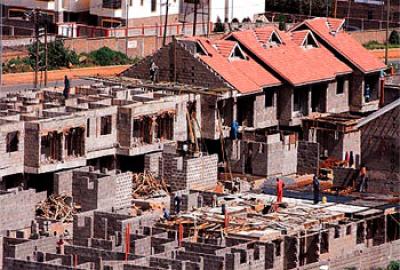Rates of urbanization in Africa are the highest in the world. Nigeria, for example, will be one of the world’s five largest markets for new construction for urban low-income housing units in 2025. According to McKinsey Global Institute (MGI), if current trends in urbanization and income growth worldwide persist, by 2025 the number of urban households that live in substandard housing — or are so financially stretched by housing costs that they forego other essentials, such as healthcare — could grow to 440 million, from 330 million. This could mean that the global affordable housing gap would affect one in three urban dwellers, about 1.6 billion people.
A new MGI report, A Blueprint for Addressing the Global Affordable Housing Challenge, says the following four approaches used in concert could reduce the cost of affordable housing by 20 to 50 percent and substantially narrow the affordable housing gap by 2025.
Unlocking land supply. Since land is usually the largest real-estate expense, securing it at appropriate locations can be the most effective way to reduce costs. In even the largest global cities, many parcels of land remain unoccupied or underused. Some of them may belong to government and could be released for development or sold to buy land for affordable housing. Private land can be brought forward for development through incentives such as density bonuses—increasing the permitted floor space on a plot of land and, therefore, its value; in return, the developer must provide land for affordable units.
Reducing construction costs. While manufacturing and other industries have raised productivity steadily in the past few decades, in construction it has remained flat or gone down in many countries. Likewise, in many places residential housing is still built in the same way it was 50 years ago. Project costs could be reduced by about 30 percent and completion schedules shortened by about 40 percent if developers make use of value engineering (standardizing design) and industrial approaches, such as assembling buildings from prefabricated components manufactured off-site. Efficient procurement methods and other process improvements would help, as well.1 1.For more on new construction techniques, see David Xu, “How to build a skyscraper in two weeks,” May 2014.
Improved operations and maintenance. Twenty to 30 percent of the cost of housing is operations and maintenance. Energy-efficiency retrofits, such as insulation and new windows, can cut these costs. Maintenance expenses can be reduced by helping owners find qualified suppliers (through registration and licensing) and by consolidated purchasing.
Lowering financing costs for buyers and developers. Improvements in underwriting would help banks safely make more housing loans to lower-income borrowers. Contractual savings programs can help such buyers accumulate down payments and therefore finance purchases with smaller and less risky loans. Such programs can also provide capital for low-interest mortgages to savers. Governments could help cut the financing costs of developers by making affordable housing projects less risky—for instance, by guaranteeing buyers or tenants for finished units.
Read more here













